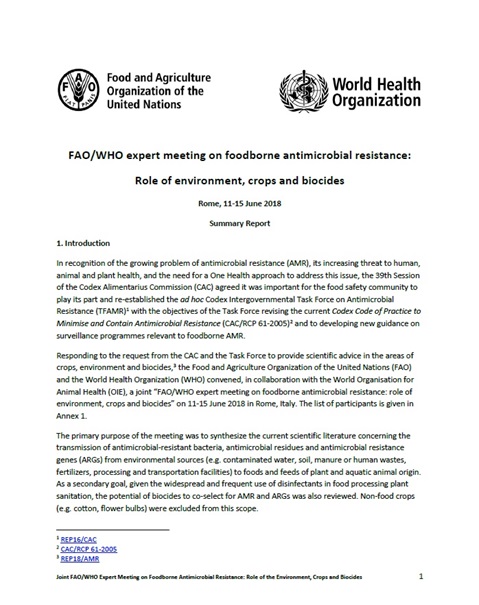Foodborne antimicrobial resistance (AMR): role of environment, crops and biocides - FAO/WHO expert meeting
11-15 June 2018, Rome, Italy

Overview
Responding to the request from the CAC and the Task Force to provide scientific advice in the areas of crops, environment and biocides,3 the Food and Agriculture Organization of the United Nations (FAO) and the World Health Organization (WHO) convened, in collaboration with the World Organisation for Animal Health (OIE), a joint “FAO/WHO expert meeting on foodborne antimicrobial resistance: role of environment, crops and biocides” on 11-15 June 2018 in Rome, Italy.
The primary purpose of the meeting was to synthesize the current scientific literature concerning the transmission of antimicrobial-resistant bacteria, antimicrobial residues and antimicrobial resistance genes (ARGs) from environmental sources (e.g. contaminated water, soil, manure or human wastes, fertilizers, processing and transportation facilities) to foods and feeds of plant and aquatic animal origin. As a secondary goal, given the widespread and frequent use of disinfectants in food processing plant sanitation, the potential of biocides to co-select for AMR and ARGs was also reviewed. Non-food crops (e.g. cotton, flower bulbs) were excluded from this scope.
This summary report is a concise outline of the key discussion and conclusions reached at the meeting, and is meant to inform on-going Codex process in a timely manner. The content in this document is subject to modification in style and substance in the final report, which will have a formal status and will be published in future.

